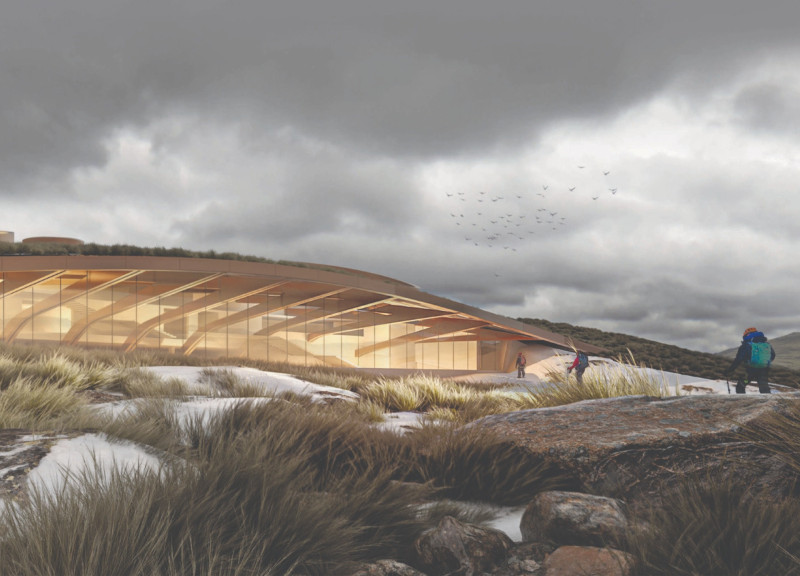5 key facts about this project
Disappearance into Mývatn Hills explores the relationship between architecture and the natural environment in Mývatn, Iceland. It emphasizes continuity by merging the structure with the landscape while providing a space for community interaction and agricultural research. The design favors simplicity and clarity, allowing the building to integrate well with its rural context.
Design Concept
The vision for this building relies on connecting with the surrounding landscape. The structure adapts to the terrain, creating visual links with the open vistas. Long sightlines invite occupants to engage with the extensive natural scenery. Sustainability plays a key role in this vision, focusing on ecological balance and addressing the community's needs.
Efficiency in Planning
The design prioritizes efficiency in its planning process. It considers environmental impacts relating to soil, energy sources, air quality, and waste management. The spatial organization across multiple levels enhances access to essential public services. A centralized hangar structure serves to strengthen social and economic connections in the area, creating a functional environment for the community.
Functional Areas
A notable feature is the greenhouse located on the top floor. This area serves as a research center and supports local agriculture, reflecting the commitment to sustainable practices. Various functional spaces accommodate community activities, including an operating sector, visitor and study areas, offices, a cafe, and a multipurpose community room. This design promotes interaction among residents and visitors, fostering a sense of community.
Architectural Characteristics
The building's appearance features clean lines and contemporary forms that relate to its natural surroundings. Large windows provide ample views while enhancing thermal performance and creating a pleasant interior climate. The glazing allows natural light to fill the main areas, reducing the need for artificial lighting and supporting energy efficiency.
The roof merges with the slope of the hill, echoing its shape and welcoming the surrounding environment. This detail allows nature to play a role in the architecture, reinforcing the overall concept of sustainability and connection to the landscape.





















































